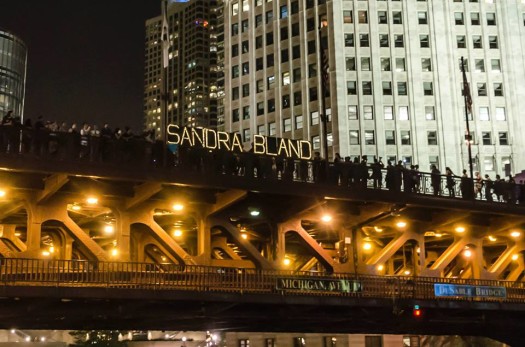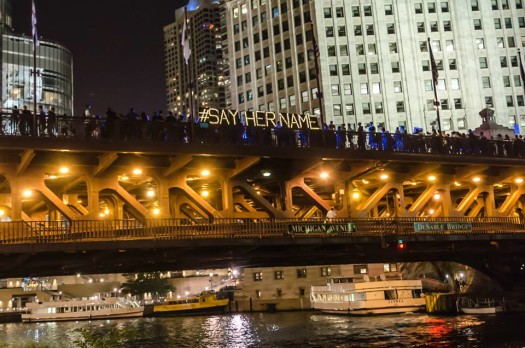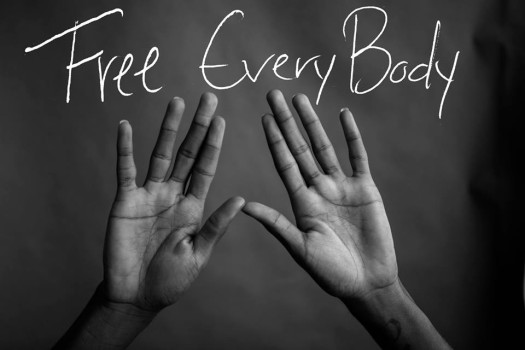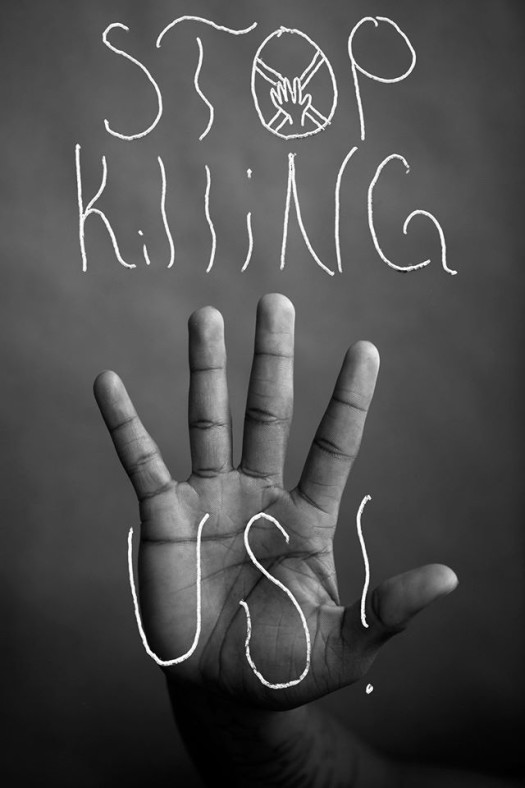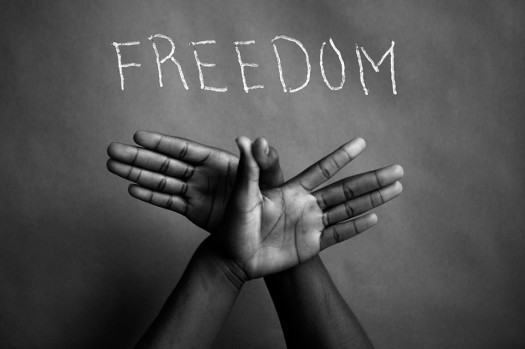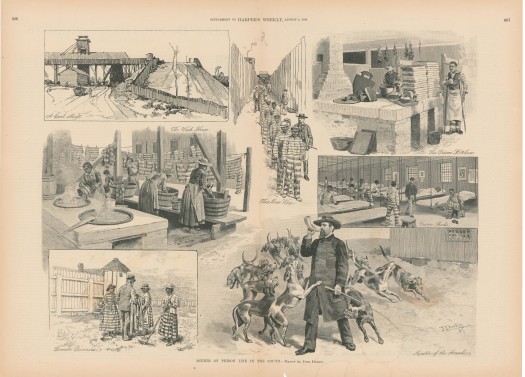#SayingHerName in Chicago
Yesterday on Facebook, I read a series of posts by a young Black woman. She was lamenting the fact that Black men are too often silent and sometimes hostile about addressing violence against Black women. She was also dismayed at some of the women who insist that raising the issue of violence against Black women is ‘divisive.’ At one point, she wrote in exasperation: “You would think as a black woman you’d be on your own side.” Her words are profound and sad.
On Tuesday night in Chicago, many Black women were on our own side as we lifted up the name of our sister Sandra Bland. Last week, my friend Kelly who is a local indigenous organizer reached out to me to ask if my organization would co-sponsor a Light Action for Sandra Bland as part of a National call to action. I immediately agreed and Kelly did the heavy lifting to organize the event.
I listened on Tuesday night as Black women I know and care about spoke about our erasure and about the silence that too often greets our suffering. Together we declared ‘no more.’ There were tears and song. There was rage and love. There was an insistence that we would MAKE our own lives matter because we understand our value. It was so heartening that nearly 300 people braved the humidity and showed up despite the late hour. We needed darkness for the action to happen.
I was in Cleveland this weekend to participate in the Movement for Black Lives Convening. As we were leaving to meet the bus that would take us home to Chicago, we stumbled upon a group of people demanding that the police release a 14 year old who they had in handcuffs. The police escalated the confrontation by pepper spraying several people indiscriminately. The cops did not care who they were spraying. We were all Black and it didn’t matter if we were women, men, gender non conforming, trans, adult or child. We were Black and they sprayed us as my friend Page said “like we were bugs.” Dr. Brittany Cooper was there too and wrote about the incident:
“While protesters were securing the teenager’s release, I was among a group of attendees helping those who had been pepper-sprayed – filling emptied water bottles with milk to treat the spray, holding hands and rubbing the backs of those writhing in pain, reminding them to breathe while I did the same. I won’t soon be over the horror and helplessness of that moment. I won’t soon forget the sound of Black people screaming from the effects of pepper spray, because they had stood up to protect the safety of a Black child. I haven’t stopped wondering how those activists who have been on the front lines since last August manage to be subjected to such violent bodily violation regularly.”
I am coming down with something (a cough and sore throat) and I have no doubt that Sunday’s chaos has contributed to my illness. The incident in Cleveland should remind everyone that we are in this thing TOGETHER and that ALL Black people are targets. When some of my friends were sprayed, I ran to get milk. Other women were tending to those in pain. Trans people put their bodies on the line by blocking the path of police cars. Black women lawyers were the ones directly negotiating with cops who were threatening to have them arrested. Black men were there too; helping to keep people calm and putting their bodies on the line. My point is that all of us were needed to successfully de-arrest the 14 year boy. All of us had a role to play. We needed everyone. And as Black women, we are always there for everyone. I think that it’s important to prioritize being on our own side.
There is a lot to say about the Movement for Black Lives convening aside from the deplorable actions of the police on that last day. I continue to process my experience. One thing that stands out is how central love (in its various manifestations) was to the convening. Love: not the sentimental kind but the Agape kind in particular. My friend Dr.Tamara Nopper recently posted some words by Sonia Sanchez that resonate for me in this moment:
The great writer Zora Neal Hurston said,
Fear was the greatest emotion on the planet Earth
and I said, No my dear sista
Fear will make us move to save our lives
To save our own skins
But love
Will make us save other people’s skins and lives
So love is primary at this particular point in time.
Put on, what I like to call:
The sleeves of love
Put on the legs of love
Put on the feet of love
Put on the head of love
Put on the mouth of love
Put on the hands of love
And love love love love love love
Yourself
And others
Love love love love love
Because love is the greatest emotion on the planet Earth
Love.-Sonia Sanchez
In the coming days here in Chicago, a number of us are organizing a series of events to center the experiences of and resistance to state violence against Black women as part of Black August. And yes, for me, this is a labor of love. It is a litany for survival. You can learn about the upcoming events, actions, and interventions HERE. If you are in Chicago, hope to see some of you.
